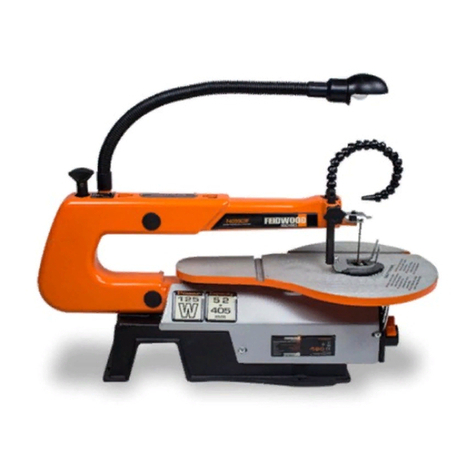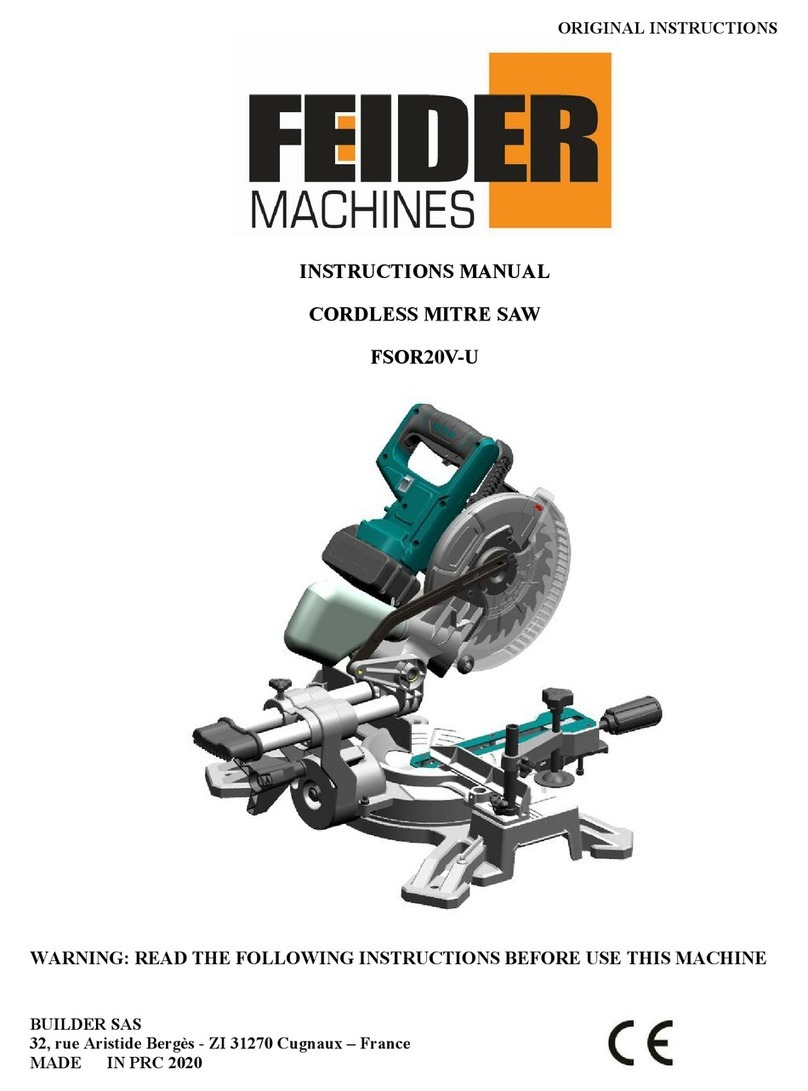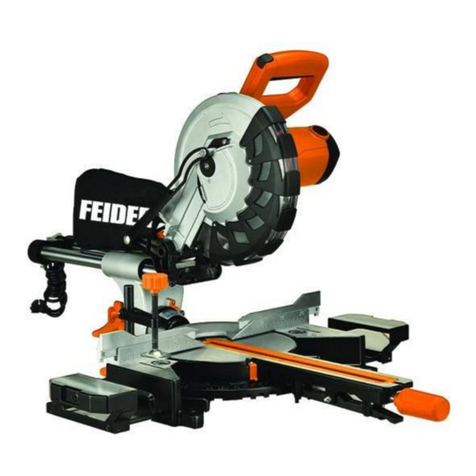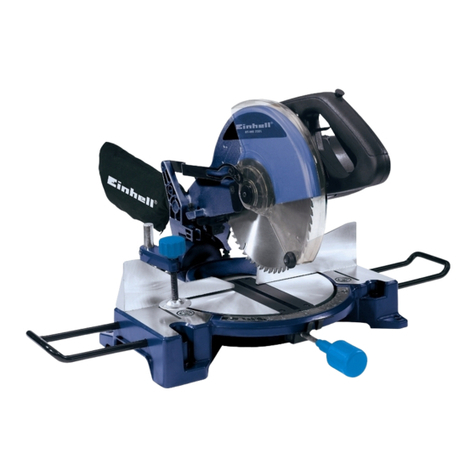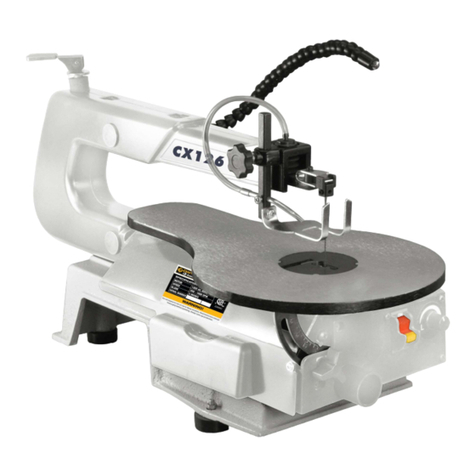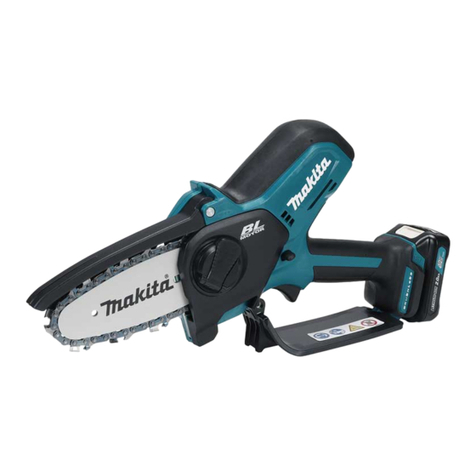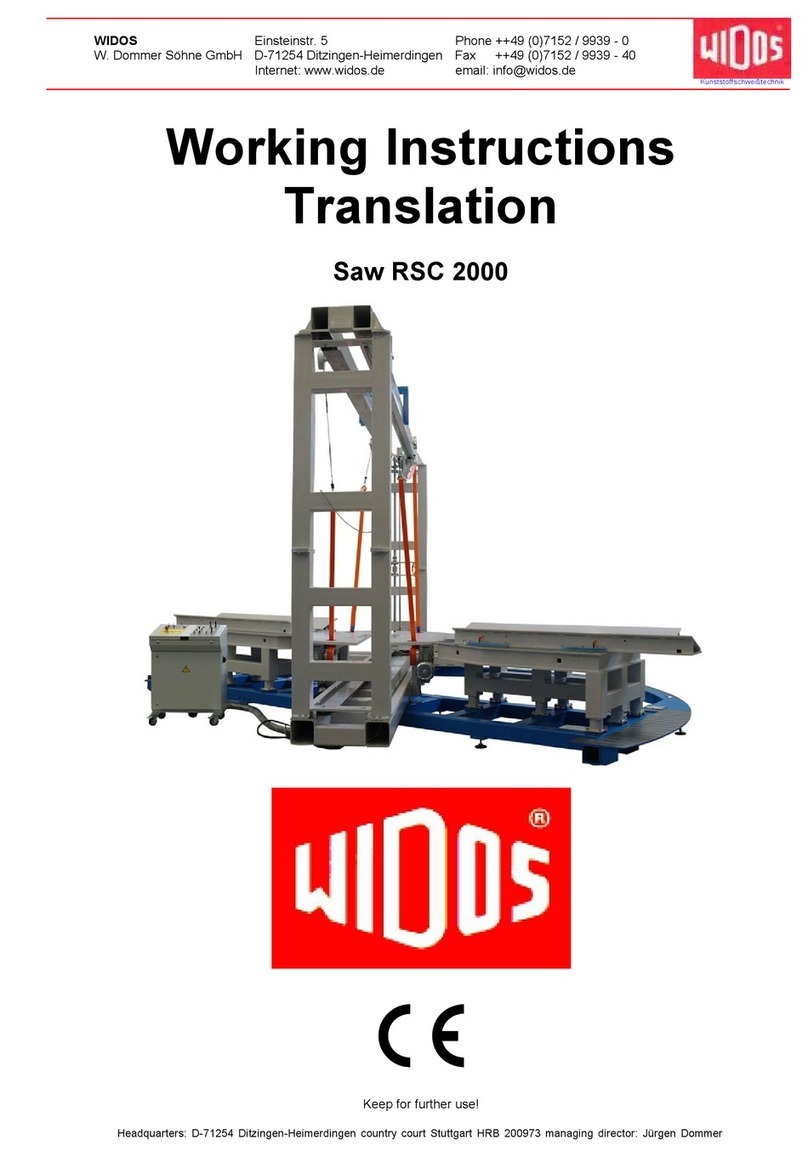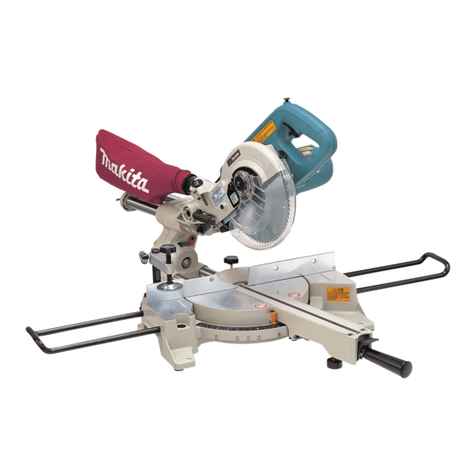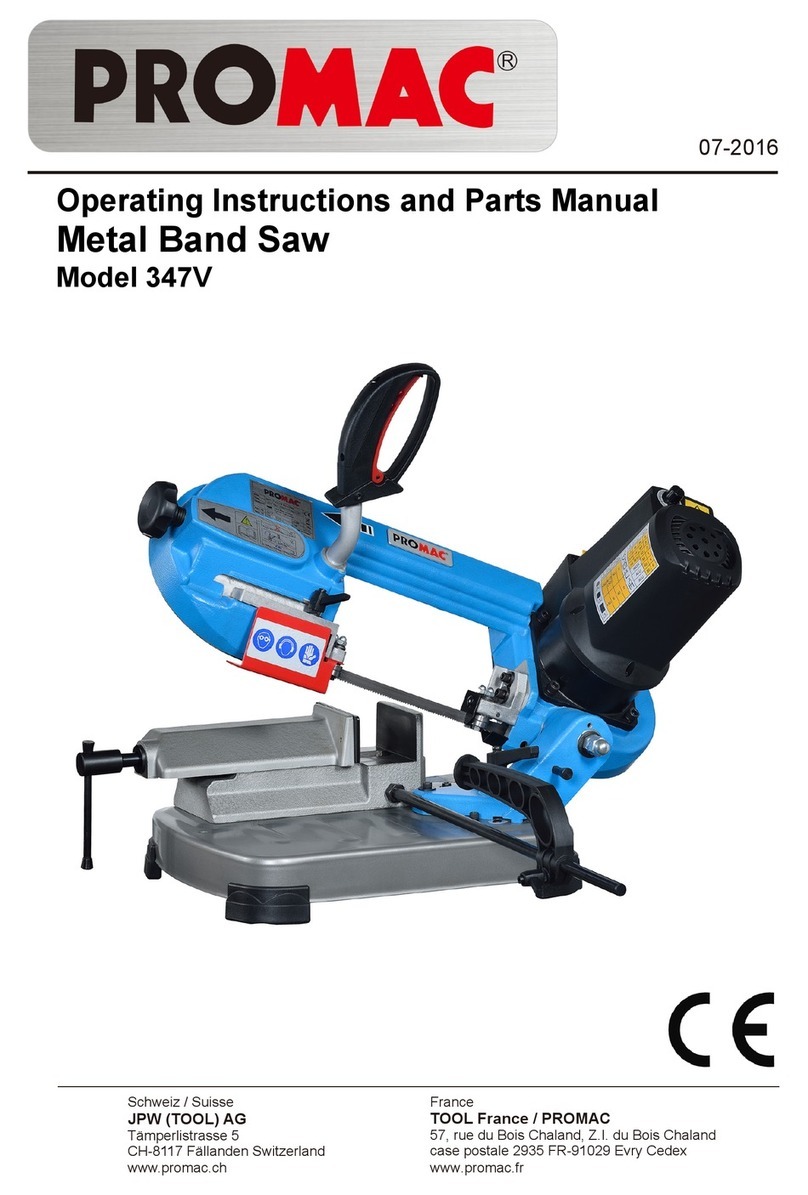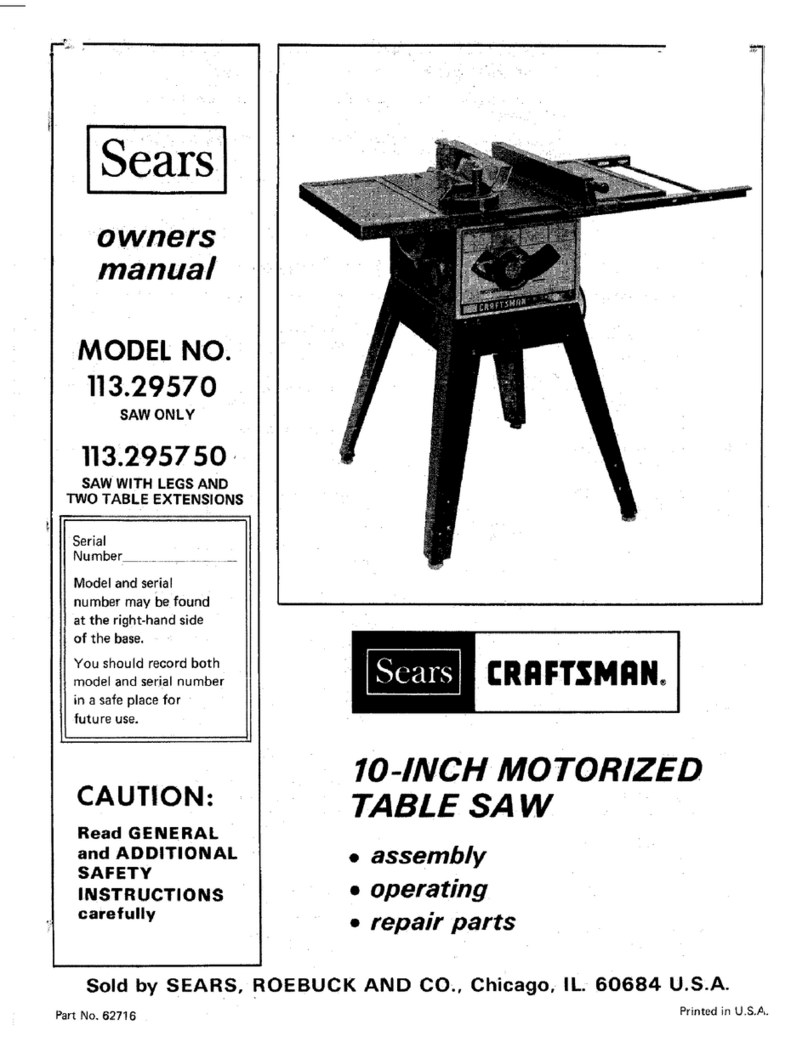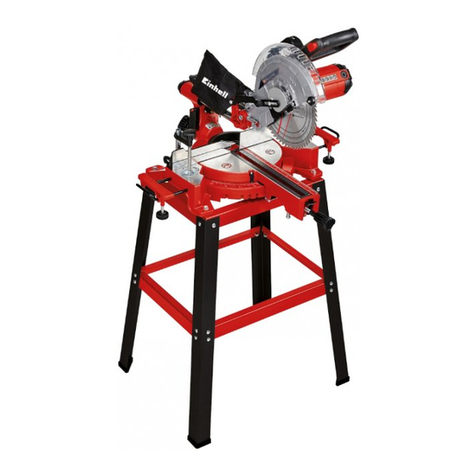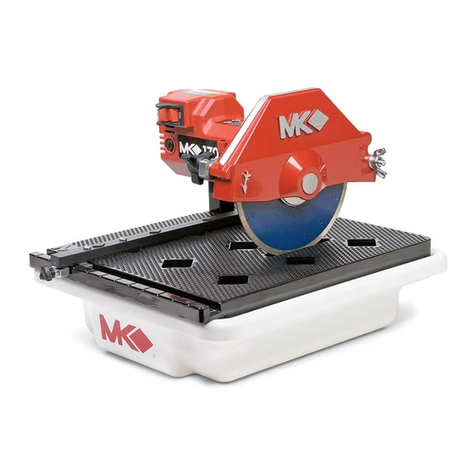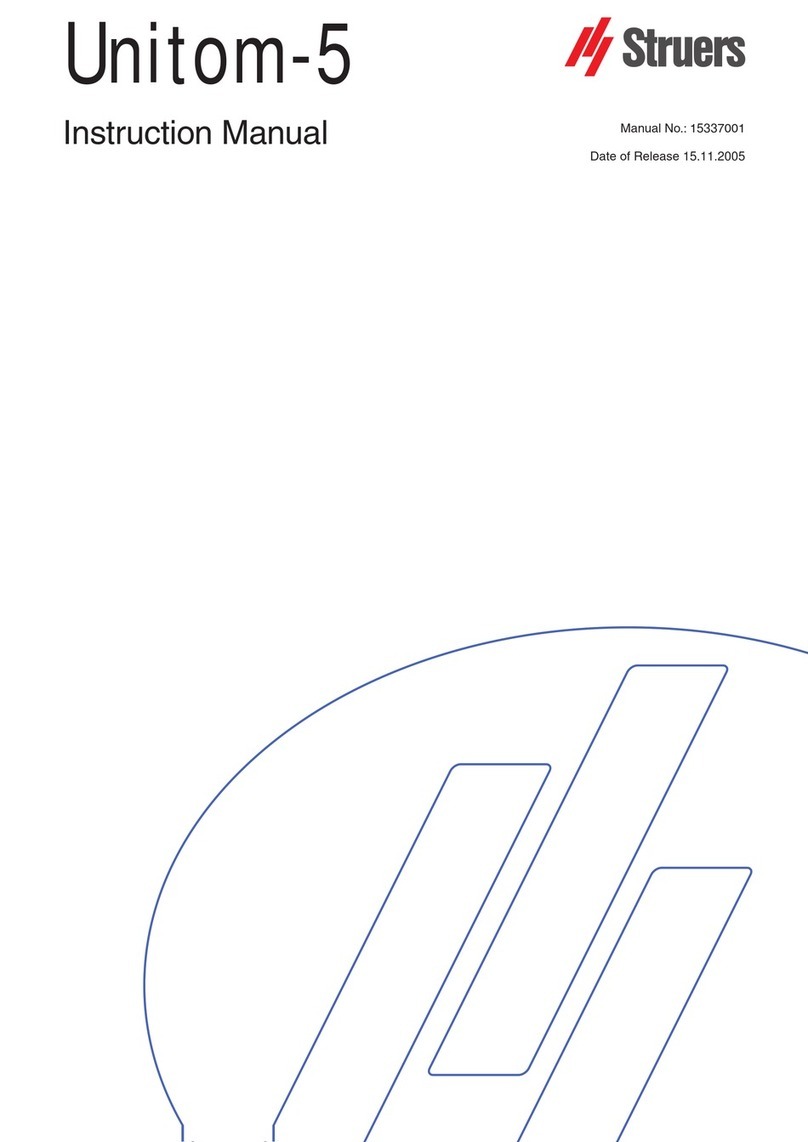Feider Machines FSC1485-B User manual

ORIGINAL NSTRUCTIONS >EN
CIRCULAR SAW
FSC1485-B
USER GUIDE
CAUTION: Read the instructions before using the machine!

CONTENTS
1. INTENDED USE 3
2. SAFETY INSTRUCTIONS 3
3. PRODUCT DESCRIPTION 7
5. ASSEMBLY AND OPERATION 8
6. MAINTENANCE AND CARE 9
4. SPECIFICATION 8
7. DISPOSAL 10
8. DECLARATION OF CONFORMITY 11
9. WARRANTY 12
10. PRODUCT FAILURE 13
11. WARRANTY EXCLUSIONS 14

1. INTENDED USE
The hand-held circular saw is suitable for sawing straight cuts into wood, wood like materials and plastic.
Only use this machine according to its intended use! Any use extending beyond this does not constitute
intended use. The user, not the manufacturer, is liable for resulting damages or injuries of any kind.
Our equipment is not intended for commercial or industrial use. If this device is used in the context of
commercial or industrial use, the warranty is void.
2. SAFETY INSTRUCTIONS
2.1 GENERAL POWER TOOL SAFETY INFORMATION
WARNING Read all safety warnings, instructions, illustrations and specifications provided with
this power tool. Failure to follow all instructions listed below may result in electric shock, fire and/or serious
injury.
Save all warnings and instructions for future reference. The term "power tool" in the warnings refers to
your mains-operated (corded) power tool or battery-operated (cordless) power tool.
1) Work area safety
a) Keep work area clean and well lit. Cluttered or dark areas invite accidents.
b) Do not operate power tools in explosive atmospheres, such as in the presence of flammable
liquids, gases or dust. Power tools create sparks which may ignite the dust or fumes.
c) Keep children and bystanders away while operating a power tool. Distractions can cause you to lose
control.
2) Electrical safety
a) Power tool plugs must match the outlet. Never modify the plug in any way. Do not use any adapter
plugs with earthed (grounded) power tools. Unmodified plugs and matching outlets will reduce risk of
electric shock.
b) Avoid body contact with earthed or grounded surfaces, such as pipes, radiators, ranges and
refrigerators. There is an increased risk of electric shock if your body is earthed or grounded.
c) Do not expose power tools to rain or wet conditions. Water entering a power tool will increase the risk
of electric shock.
d) Do not abuse the cord. Never use the cord for carrying, pulling or unplugging the power tool.
Keep cord away from heat, oil, sharp edges or moving parts. Damaged or entangled cords increase
the risk of electric shock.
e) When operating a power tool outdoors, use an extension cord suitable for outdoor use. Use of a
cord suitable for outdoor use reduces the risk of electric shock.
f) If operating a power tool in a damp location is unavoidable, use a residual current device (RCD)
protected supply. Use of an RCD reduces the risk of electric shock.
3) Personal safety
a) Stay alert, watch what you are doing and use common sense when operating a power tool. Do not
use a power tool while you are tired or under the influence of drugs, alcohol or medication. A
moment of inattention while operating power tools may result in serious personal injury.
b) Use personal protective equipment. Always wear eye protection. Protective equipment such as dust
mask, non-skid safety shoes, hard hat, or hearing protection used for appropriate conditions will reduce
personal injuries.
c) Prevent unintentional starting. Ensure the switch is in the off-position connecting to power source
and/or battery pack, picking up or carrying the tool. Carrying power tools with your finger on the
switch or energizing power tools that have the switch on invites accidents.
3

d) Remove any adjusting key or wrench before turning the power tool on. A wrench or a key left
attached to a rotating part of the power tool may result in personal injury.
e) Do not overreach. Keep proper footing and balance at all times. This enables better control of the
power tool in unexpected situations.
f) Dress properly. Do not wear loose clothing or jeweler. Keep your hair, clothing and gloves away
from moving parts. Loose clothes, jeweler or long hair can be caught in moving parts.
g) If devices are provided for the connection of dust extraction and collection facilities, ensure these
are connected and properly used. Use of dust collection can reduce dust-related hazards.
h) Do not let familiarity gained from frequent use of tools allow you to become complacent and
ignore tool safety principles. A careless action can cause severe injury within a fraction of a second.
4) Power tool use and care
a) Do not force the power tool. Use the correct power tool for your application. The correct power tool
will do the job better and safer at the rate for which it was designed.
b) Do not use the power tool if the switch does not turn it on and off. Any power tool that cannot be
controlled with the switch is dangerous and must be repaired.
c) Disconnect the plug from the power source and/or the battery pack from the power tool before
making any adjustments, changing accessories, or storing power tools. Such preventive safety
measures reduce the risk of starting the power tool accidentally.
d) Store idle power tools out of the reach of children and do not allow persons unfamiliar with the
power tool or these instructions to operate the power tool. Power tools are dangerous in the hands of
untrained users.
e) Maintain power tools. Check for misalignment or binding of moving parts, breakage of parts and
any other condition that may affect the power tool’s operation. If damaged, have the power tool
repaired before use. Many accidents are caused by poorly maintained power tools.
f) Keep cutting tools sharp and clean. Properly maintained cutting tools with sharp cutting edges are less
likely to bind and are easier to control.
g) Use the power tool, accessories and tool bits etc. in accordance with these instructions, taking
into account the working conditions and the work to be performed. Use of the power tool for
operations different from those intended could result in a hazardous situation.
h) Keep handles and grasping surfaces dry, clean and free from oil and grease. Slippery handles and
grasping surfaces do not allow for safe handling and control of the tool in unexpected situations.
5) Service
a) Have your power tool serviced by a qualified repair person using only identical replacement parts.
This will ensure that the safety of the power tool is maintained.
b) Never service damaged battery packs. Service of battery packs should only be performed by the
manufacturer or authorized service providers.
2.2 SPECIFIC SAFETY RULES
DANGER:
a) Keep hands away from cutting area and blade. Keep your second hand on auxiliary handle or
motor housing. If both hands are holding the saw, they cannot be cut by the blade.
b) Do not reach underneath the workpiece. The guard cannot protect you from the blade below the
workpiece.
c) Adjust the cutting depth to the thickness of the workpiece. Less than a full tooth of the blade teeth
should be visible below the workpiece.
d) Never hold the workpiece in your hands or across your leg while cutting. Secure the workpiece to
4

a stable platform. It is important to support the work properly to minimise body exposure, blade binding,
or loss of control.
e) Hold power tool by insulated gripping surfaces when performing an operation where the cutting
tool may contact hidden wiring or its own cord. Contact with a “live” wire will also make exposed metal
parts of the power tool “live” and shock the operator.
f) When ripping always use a rip fence or straight edge guide. This improves the accuracy of cut and
reduces the chance of blade binding.
g) Always use blades with correct size and shape (diamond versus round) of arbor holes. Blades that
do not match the mounting hardware of the saw will run eccentrically, causing loss of control.
h) Never use damaged or incorrect blade washers or bolt. The blade washers and bolt were specially
designed for your saw, for optimum performance and safety of operation.
2.3 SPECIAL SAFETY REGULATIONS
Causes and operator prevention of kickback:
- Kickback is a sudden reaction to a pinched, bound or misaligned saw blade, causing an uncontrolled saw
to lift up and out of the workpiece toward the operator;
- When the blade is pinched or bound tightly by the kerf closing down, the blade stalls and the motor reaction
drives the unit rapidly back toward the operator;
- If the blade becomes twisted or misaligned in the cut, the teeth at the back edge of the blade can dig into
the top surface of the wood causing the blade to climb out of the kerf and jump back toward the operator.
- Kickback is the result of saw misuse and/or in corrects operating procedures or conditions and can be
avoided by taking proper precautions as given below.
a) Maintain a firm grip with both hands on the saw and position your arms to resist kickback forces.
Position your body to either side of the blade, but not in line with the blade. Kick back could cause
the saw to jump backwards, but kickback forces can be controlled by the operator, if proper precautions
are taken.
b) When blade is binding, or when interrupting a cut for any reason, release the trigger and hold the
saw motionless in the material until the blade comes to a complete stop. Never attempt to
remove the saw from the work or pull the saw backward while the blade is in motion or kickback
may occur. Investigate and take corrective actions to eliminate the cause of blade binding.
c) When restarting a saw in the workpiece, center the saw blade in the kerf and check that saw teeth
are not engaged into the material. If saw blade is binding, it may walk up or kickback from the
workpiece as the saw is restarted.
d) Support large panels to minimize the risk of blade pinching and kickback. Large panels tend to sag
under their own weight. Supports must be placed under the panel on both sides, near the line of cut and
near the edge of the panel.
e) Do not use dull or damaged blades. Unsharpened or improperly set blades produce narrow kerf
causing excessive friction, blade binding and kickback.
f) Blade depth and bevel adjusting locking levers must be tight and secure before making cut. If
blade adjustment shifts while cutting, it may cause binding and kickback.
g) Use extra caution when making a “plunge cut” into existing walls or other blind areas. The
protruding blade may cut objects that can cause kickback.
2.4 SAFETY INSTRUCTIONS FOR THE SAW
a) Check lower guard for proper closing before each use. Do not operate the saw if lower guard
does not move freely and close instantly. Never clamp or tie the lower guard into the open
position. If saw is accidentally dropped, lower guard may be bent. Raise the lower guard with the
5

retracting handle and make sure it moves freely and does not touch the blade or any other part, in all
angles and depths of cut.
b) Check the operation of the lower guard spring. If the guard and the spring are not operating
properly, they must be serviced before use. Lower guard may operate sluggishly due to damaged
parts, gummy deposits, or a build-up of debris.
c) Lower guard may be retracted manually only for special cuts such as “plunge cuts” and
“compound cuts.” Raise lower guard by retracting handle and as soon as blade enters the
material, the lower guard must be released. For all other sawing, the lower guard should operate
automatically.
d) Always observe that the lower guard is covering the blade before placing saw down on bench or
floor. An unprotected, coasting blade will cause the saw to walk backwards, cutting whatever is in its
path. Be aware of the time it takes for the blade to stop after switch is released.
2.5 SPECIFIC SAFETY INSTRUCTIONS FOR CIRCULAR SAWS
a) Do not use any grinding discs.
b) Use only saw blade with diameters corresponding to the label on the saw.
c) When sawing wood or other materials which may create dusts that are hazardous to health, always
connect a suitable, certified vacuum extractor device.
d) Wear a dust mask when sawing wood.
e) Use only the recommended saw blades.
f) Always wear ear protectors.
g) Do not allow the teeth of the saw blade to overheat.
h) Always use the correct saw blade for the material being worked.
i) Use only saw blades with a speed marking which corresponds to or is higher than the speed specified for
the power tool.
j) Saw blades are intended for use on wood and similar material.
k) If the supply cord of this power tool is damaged, it must be replaced by a specially prepared supply cord
available through the service organization.
l) Avoid melting plastic during plastic cutting.
2.6 SYMBOLS
To reduce the risk of injury, the user must read and understand this manual
before using this product.
Wear ear protectors. Exposure to noise can cause hearing loss.
Wear eye protection.
Wear respiratory protection.
Conforms to relevant safety standards
Class II, double isolation
6

Do not dispose of old appliances with domestic rubbish
2.7 SECURITY INSTRUCTIONS FOR LASER
WARNING! Protect yourself from laser radiation
The Circular saw contains a Class 2 Laser.
1. NEVER direct the laser beam at people or animals.
2. NEVER look directly into the laser beam. The laser beam
can cause serious eye damage.
3. Do NOT direct the laser beam at strongly reflective material. Reflected laser beams are also dangerous.
4. Any adjustment intended to increase the intensity of the laser beam is forbidden. There is a risk of
personal injury!
5. No liability will be accepted for damage resulting from manipulation of the laser
6. equipment or from disregarding these safety instructions.
7. Caution if other than the controls or adjustments specified here or other procedures are carried out, this
may lead to dangerous exposure to radiation.
3. PRODUCT DESCRIPTION
01. Front handle
02. ON/OFF switch for laser
03. Laser
04. Fixation screws for mitre adjustment
05. Fixation screw for parallel stop
06. Support base
07. Saw blade
08. Fixation screw for cutting depth adjustment
09. Blade guard
10. Power cable
11. Rear handle
12. Safety switch
13. On/Off switch
14. Scale
7

4. TECHNICAL DATA
Nominal voltage/frequency: 220-240V~, 50Hz
Rated power 1400 W
Protection class II
Max. idle rotational speed 5500/min
Max. cutting depth at 0°: 65 mm
Max. cutting depth at 45°: 44 mm
Saw blade diameter 185 mm
Borehole 20 mm
Saw blade core thickness 2,40 mm
Saw blade cutting thickness 2,4 mm
Vibration value:
Handle ah = 5,24 m/s²
Uncertainty K = 1,5 m/s²
Sound pressure level (LPA) 95 dB(A); Uncertainty
KPA =3 db(A)
Noise level (LWA) 106 dB(A); Uncertainty KWA =3
db(A)
Information
The declared vibration total value has been measured in accordance with a standard test method
and may be used for comparing one tool with another;
The declared vibration total value may also be used in a preliminary assessment of exposure.
Warning
that the vibration emission during actual use of the power tool can differ from the declared total
value depending on the ways in which the tool is used; and
of the need to identify safety measures to protect the operator that are based on an estimation of
exposure in the actual conditions of use (taking account of all parts of the operating cycle such as
the times when the tool is switched off and when it is running idle in addition to the trigger time).
Wear hearing protection
5. ASSEMBLY AND OPERATION
Remove the power tool from the packaging. Do not plug it into the electrical grid before assembly. This
instruction applies for all adjustment work.
5.1 CUTTING DEPTH ADJUSTMENT
Loosen the fixation screw (8) of the cutting depth adjustment on the back part of the saw. Hold the support
base (6) firmly and lift the motor section up by the hand grip (11). Adjust the desired cutting depth and set
this with the fixation screw (8). The cutting depth should be 3 mm greater than the thickness of the piece to
be cut.
5.2 PARALLEL STOP ADJUSTMENT
Aparallel stop is part of your circular hand saw. This enables the cutting of a straight line parallel to the angle
of the piece to be cut. Recesses into which the parallel stop can be inserted laterally are located in the front
part of the support base (6). Slide the stop in until you have reached the desired distance to the saw blade.
Set the adjustment with the fixation screw (5).
5.3 SETTING THE MITER
You can use the hand-held circular saw to saw miter cuts to 45°. Loosen both locking screws (4). Set the
hand-held circular saw to the desired angle on the miter scale. Fix the setting with both locking screws (4).
8

5.4 CHANGING THE SAW BLADE
Protect yourself against cutting injuries by wearing gloves! Press the spindle locking button and turn the saw
blade until the spindle locking button stays pressed. The spindle lock may only be actuated when the saw
blade is stationary. Keep the spindle locking button pressed and loosen the Allen screw by turning the Allen
key anticlockwise. Pull back the saw guard. Now remove the Allen screw, the flange and the saw blade.
Before inserting the new blade, make sure that it is facing the right direction of rotation. This is indicated by
arrows both on the saw as well as the saw blade. They have to point in the same direction. After placing the
saw blade on the inner flange, make sure that the flat area of the outer flange (crowning to the outside)
re-engages in the spindle drive. Now hold the spindle locking button pressed and fix the Allen screw using
the Allen key.
5.5 WORKING WITH THE CIRCULAR HAND SAW
Only saw blades for cutting wood are suitable for your saw! Do not use any saw blades for cutting stone or
metal! Mark the desired cutting line with a pencil or similarly on the piece to be cut. To turn on the tool, press
the safety switch (12) and then press the on/off switch (13). To turn off the tool, release the on/off switch (13).
Always hold the saw firmly with both hands when working! Turn the tool on before applying it to the piece to
be cut. Lead the saw without applying additional pressure and allow the saw blade time to follow the cutting
line. Attention: do not use any grinding wheels!
5.6 SWITCHING THE LASER ON AND OFF
•Press the ON/OFF switch laser to switch it on;
•Press the ON/OFF switch laser once more to switch it off;
NOTE: if the batteries are spent, replace with the two 1.5V alkaline button cells (type L1154F).
6. MAINTENANCE AND CARE
6.1 OVERLOADING
Never apply excessive force when cutting. Too much pressure decreases the speed of the tool, while the
required power increases sharply. This leads to overloading, which can damage the motor. If the machine
becomes too hot, let it idle for two minutes and then let it rest. Clean the machine with a clean cloth and
brush. Do not use any solvents. Make sure the ventilation slots are not blocked!
6.2 DUST EXTRACTION
We recommend that you always attach an industrial vacuum cleaner when using the circular hand saw. In
the case of extensive woodworking, the power tool should be attached to suitable external dust extraction
equipment.
When using, always wear appropriately tested hearing protection!
Recommended nominal operating duration: a maximum of 20 minutes of continuous use. Quiet period after
continuous use: 5-10 minutes.
6.3 MALFUNCTIONING
If the circular saw does not function properly, we are providing you with several possible causes and the
corresponding solutions.
9

1) The electric motor heats up to more than 70 °C.
a) The motor is overloaded.
b) Cut more slowly and allow the motor to cool down.
c) The motor is defective.
d) Bring the saw in for a check and / or repair to your Workers Best dealer.
2) The machine does not work when turned on.
a) Interruption of the electrical supply.
b) Check the electrical supply connection for a possible broken cable.
c) Damage to the switch.
d) Bring the saw in for a check and / or repair to your Workers Best dealer.
3) The saw moves with difficulty along a straight line on the cut piece and the saw cut is irregular.
a) The saw blade is warped or dull.
b) Change the saw blade.
4) The circular hand saw is very loud and/or works very irregularly.
a) The carbon brushes are worn out.
b) Bring the saw in for a check and / or repair to your Workers Best dealer.
7. DISPOSAL
Do not throw away your electrical appliance with the household waste! In accordance with the
European Directive 2012/19/EU on waste electrical and electronic equipment and its
implementation in national laws, power tools that can no longer be used must be separated and
follow an appropriate recycling pathway.
10

8. DECLARATION OF CONFORMITY
BUILDER SAS
32, rue Aristide Bergès - ZI 31270 Cugnaux - France, declares that,
Product: CIRCULAR SAW
Trademark: FEIDER
Model: FSC1485-B
Serial number: 20211203426-20211203925
is in conformity with the essential requirements and other relevant provisions of the applicable European
Directives, based on the application of European harmonized standards.Any unauthorized modification
of the apparatus voids thisdeclaration.
European Directives (including, if applicable, their amendments up to the date ofsignature);
RoHS directive 2011/65/EU + (EU) 2015/863
Directive Machine 2006/42/EC
Directive EMC 2014/30/UE
LVD Directive 2014/35/UE
European harmonized standards (including, if applicable, their amendments up to the dateof signature);
EN62841-1: 2015+AC:2015;
EN62841-2-5: 2014
Cugnaux, 21/05/2021
Philippe MARIE / PDG
Responsible of the technical file: M. Olivier Patriarca
11
EN 55014-1:2017+A11:2020
EN 55014-2:2015
EN IEC 61000-3-2:2019
EN 61000-3-3:2013+A1:2019

9. WARRANTY
The manufacturer guarantees the product against defects in material and workmanship for a period
of 2 years from the date of the original purchase. The warranty only applies if the product is for
household use. The warranty does not cover breakdowns due to normal wear and tear.
The manufacturer agrees to replace parts identified as defective by the designated distributor. The
manufacturer does not accept responsibility for the replacement of the machine, in whole or in part,
and/or ensuing damage.
The warranty does not cover breakdowns due to:
insufficient maintenance.
abnormal assembly, adjustment or operations of the product.
parts subject to normal wear and tear.
The warranty does not extend to:
shipping and packaging costs.
using the tool for a purpose other than that for which it was designed.
the use and maintenance of the machine done in a manner not described in the user manual.
Due to our policy of continuous product improvement, we reserve the right to alter or change
specifications without notice. Consequently, the product may be different from the information
contained therein, but a modification will be undertaken without notice if it is recognized as an
improvement of the preceding characteristic.
READ THE MANUAL CAREFULLY BEFORE USING THE MACHINE.
When ordering spare parts, please indicate the part number or code, you can find this in the spare
parts list in this manual. Keep the purchase receipt; without it, the warranty is invalid. To help you
with your product, we invite you to contact us by phone or via our website:
+33 (0)9.70.75.30.30
https://services.swap-europe.com/contact
You must create a "ticket" via the web platform.
Register or create your account.
Indicate the reference of the tool.
Choose the subject of your request.
Describe your problem.
Attach these files: invoice or sales
receipt, photo of the identification plate
(serial number), photo of the part you
need (for example: pins on the
transformer plug which are broken).
12

10. PRODUCT FAILURE
WHAT TO DO IF MY MACHINE BREAKS DOWN?
If you bought your product in a store:
•Make sure that your machine is complete with all accessories supplied, and clean! If this is not
the case, the repairer will refuse the machine.
•Go to the store with the complete machine and with the receipt or invoice.
If you bought your product on a website:
•Make sure that your machine is complete with all accessories supplied, and clean! If this is not
the case, the repairer will refuse the machine.
•Create a SWAP-Europe service ticket on the site: https://services.swap-europe.com When
making the request on SWAP-Europe, you must attach the invoice and the photo of the nameplate
(serial number).
Contact the repair station to make sure it is available before dropping off the machine.
Go to the repair station with the complete machine packed, accompanied by the purchase invoice
and the station support sheet downloadable after the service request is completed on the
SWAP-Europe site
Please keep your original packaging to allow for after-sales service returns or pack your
machine with a similar cardboard box of the same dimensions.
For any question concerning our after-sales service you can make a request on our website
https://services.swap-europe.com
Our hotline remains available at +33 (9) 70 75 30 30.
13

11. WARRANTY EXCLUSIONS
THE WARRANTY DOES NOT COVER:
•Start-up and setting up of the product.
•Damage resulting from normal wear and tear of the product.
•Damage resulting from improper use of the product.
•Damage resulting from assembly or start-up not in accordance with the user manual.
•Breakdowns related to carburetion beyond 90 days and fouling of carburetors.
•Periodic and standard maintenance events.
•Actions of modification and dismantling that directly void the warranty.
•Products whose original authentication marking (brand, serial number) has been degraded,
altered or withdrawn.
•Replacement of consumables.
•The use of non-original parts.
•Breakage of parts following impacts or projections.
•Accessories breakdowns.
•Defects and their consequences linked to any external cause.
•Loss of components and loss due to insufficient screwing.
•Cutting components and any damage related to the loosening of parts.
•Overload or overheating.
•Poor power supply quality: faulty voltage, voltage error, etc.
•Damages resulting from the deprivation of enjoyment of the product during the time necessary
for repairs and more generally the costs related to the immobilization of the product.
•The costs of a second opinion established by a third party following an estimate by a
SWAP-Europe repair station
•The use of a product which would show a defect or a breakage which was not the subject of an
immediate report and/or repair with the services of SWAP-Europe.
•Deterioration linked to transport and storage*.
•Launchers beyond 90 days.
•Oil, petrol, grease.
•Damages related to the use of non-compliant fuels or lubricants.
* In accordance with transport legislation, damage related to transport must be declared to carriers
within 48 hours maximum after observation by registered letter with acknowledgement of receipt.
This document is a supplement to your notice, a non-exhaustive list.
Attention: all orders must be checked in the presence of the delivery person. In case of refusal by
the delivery person, it you must simply refuse the delivery and notify your refusal.
Reminder: the reserves do not exclude the notification by registered letter with acknowledgement
within 72 hours.
Information:
Thermal devices must be wintered each season (service available on the SWAP-Europe site).
Batteries must be charged before being stored.
14

BUILDER SAS
32, rue Aristide Bergès - ZI 31270 Cugnaux –France
Made in China in 2022
Table of contents
Other Feider Machines Saw manuals

Feider Machines
Feider Machines FSSAB20V-B User manual
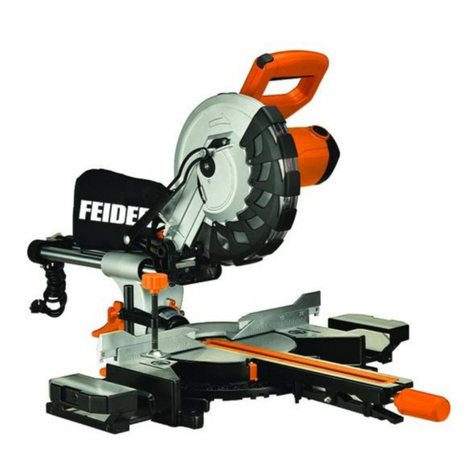
Feider Machines
Feider Machines FSO20254 User manual
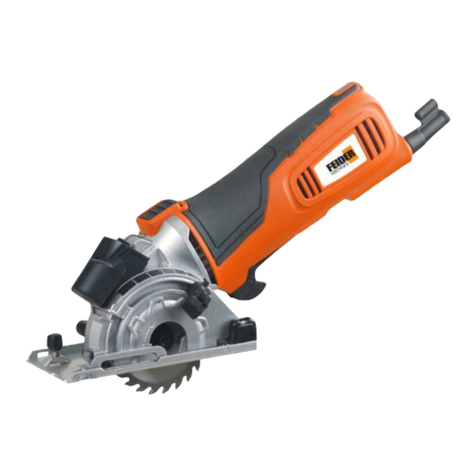
Feider Machines
Feider Machines FRX600 User manual

Feider Machines
Feider Machines FSOR254S2L User manual
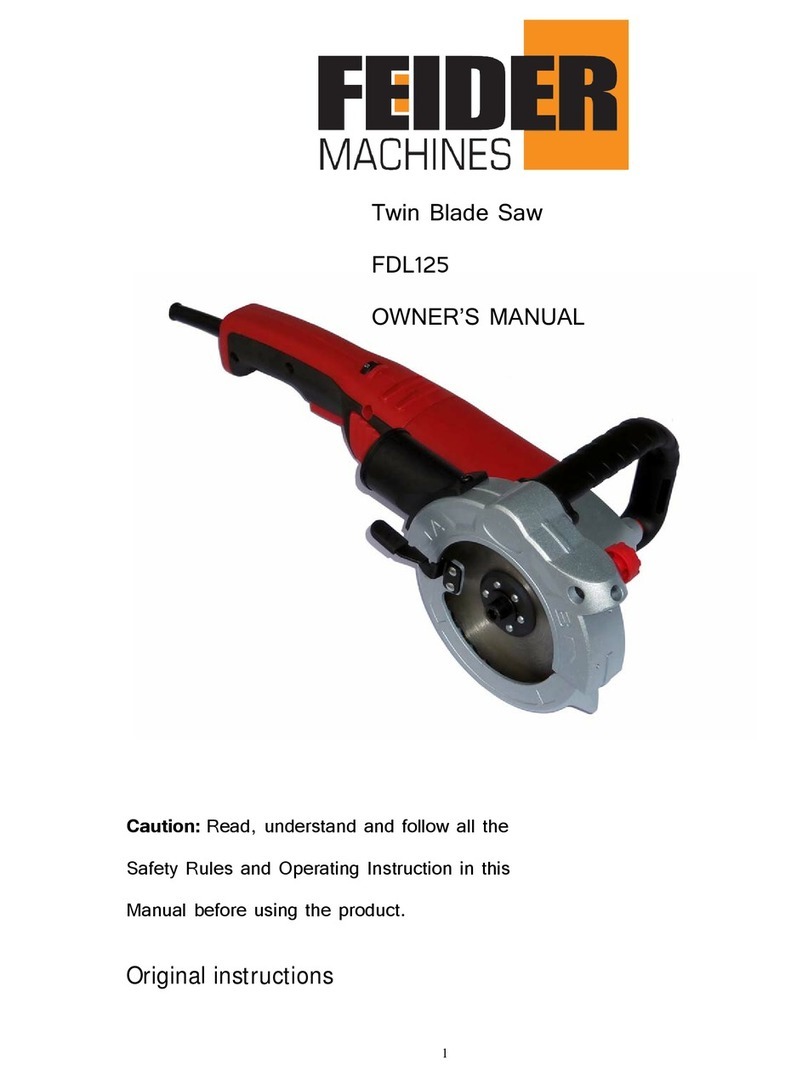
Feider Machines
Feider Machines FDL125 User manual
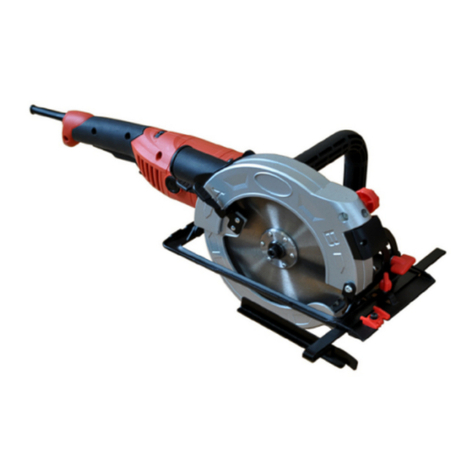
Feider Machines
Feider Machines FDL185 User manual
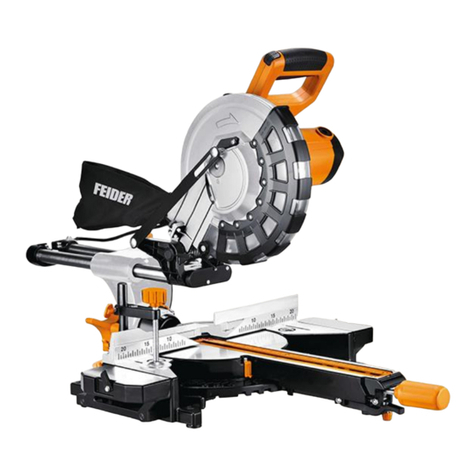
Feider Machines
Feider Machines FSOR17210 User manual

Feider Machines
Feider Machines FSP182A User manual
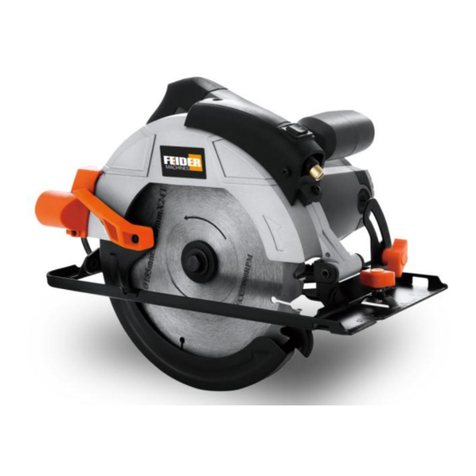
Feider Machines
Feider Machines FSC1485 User manual
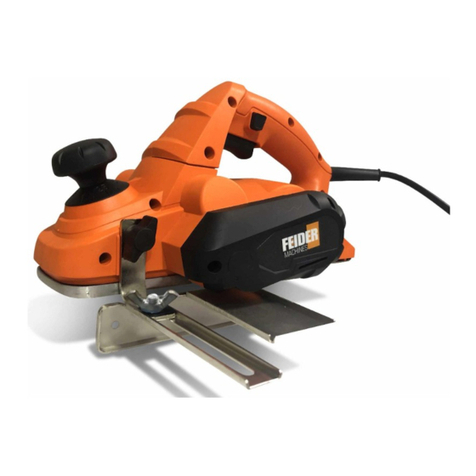
Feider Machines
Feider Machines FRB900 User manual
